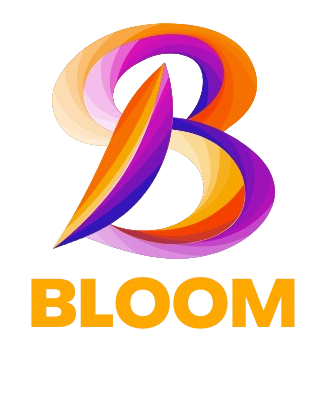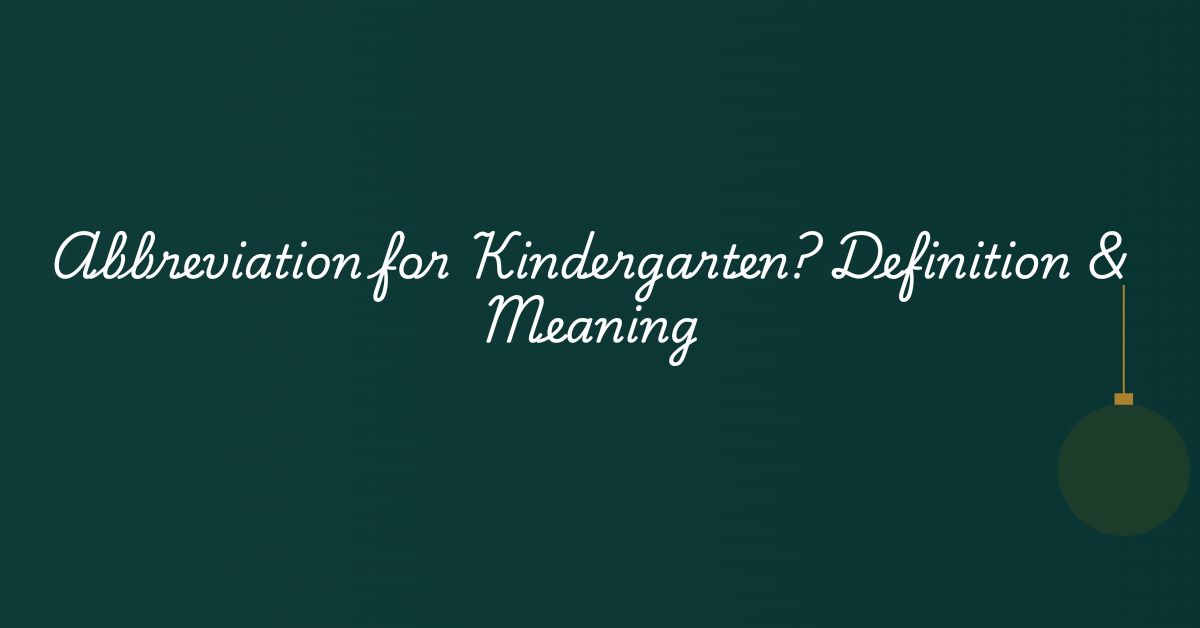The abbreviation for kindergarten is “K” or “Kdg.” These short forms are used in schools and forms. They make writing faster and simpler for teachers and parents.
Ever wondered why schools use “K” instead of the full word? It saves time and space on schedules and documents. This small letter holds big importance in education.
“K” is common in casual talks, like “K-12 schools.” “Kdg.” appears more in official papers. Both mean the same but are used differently.
What is the Abbreviation for Kindergarten?
The most common abbreviation for kindergarten is “K.” Schools and teachers use this short form often. Another formal way to write it is “Kdg.,” mostly seen in official papers. Both “K” and “Kdg.” mean the same thing but are used in different places.
Many people see “K” in “K-12 education.” This term covers all school years, from kindergarten to 12th grade. The short form makes it easier to write and say. Schools also use “K” in class lists, schedules, and report cards.
Friedrich Fröbel, a German educator, created kindergarten long ago. The word means “children’s garden” in German. Today, early childhood education uses these short forms to save time. “K” is simple, while “Kdg.” looks more formal. Both help teachers and parents communicate faster.
What Does Abbreviation for Kindergarten Mean?
The abbreviation for kindergarten helps shorten the word for everyday use. People write “K” for quick notes and “Kdg.” for official school documents. These short forms make talking about early education faster and simpler.
You’ll often see “K” in terms like “K-12 schools”, meaning kindergarten through 12th grade. The German educator Friedrich Fröbel first created kindergarten as a “children’s garden.” Today, these abbreviations keep his idea alive in modern schools.
Both “K” and “Kdg.” refer to the same first year of formal schooling. Teachers use them on schedules, while parents see them on forms. These short versions help everyone discuss childhood education without writing the long word every time.
Definition of Kindergarten
Kindergarten is the first step in a child’s formal education, typically for ages 4-6. The word comes from German, meaning “children’s garden” – a place where young minds grow through play and learning. This foundational year helps kids develop social skills, basic academics, and love for learning.
Unlike preschool, kindergarten follows a more structured school curriculum with certified teachers. Children learn letters, numbers, and how to work in groups through play-based activities. Many education experts consider this year crucial for early childhood development.
The concept was created by Friedrich Fröbel in 1837 to nurture children like plants in a garden. Today, kindergarten exists worldwide with different names: “Reception Year” in the UK, “LKG/UKG” in India. Whether called “K”, “Kdg.” or its full name, it remains every child’s important first school experience.
How to Pronounce Abbreviation for Kindergarten
The abbreviation “K” is pronounced just like the letter itself – say “kay”. You’ll hear teachers say this when talking about “K-12 schools” or class levels. It rhymes with words like “day” or “way”.
For the formal abbreviation “Kdg.”, you pronounce it as “kay-dee-gee”, saying each letter separately. Some teachers shorten it to “kindy” in casual conversation, especially in Australia and New Zealand.
The full word “kindergarten” has four parts: kin-der-gar-ten. Many people say “kin-der-garden” in everyday speech. Remember – whether you use “K”, “Kdg.” or the full word, they all mean the same special first year of school!
The Shortest Abbreviation: “K”
The letter “K” stands as the simplest way to abbreviate kindergarten. Schools everywhere use this single-letter shortcut in terms like “K-12 education” and class lists. It’s so common that most parents and teachers instantly recognize what it means.
You’ll spot “K” on school schedules, report cards, and education policies. This tiny abbreviation saves space while keeping meaning clear. Unlike longer versions, “K” fits perfectly in charts and quick notes.
While “Kdg.” works for formal documents, “K” wins for everyday use. It represents the exciting start of a child’s school journey in just one bold letter. This powerful little “K” opens the door to all of elementary education!
Acronym for Kindergarten?
Many people wonder if “kindergarten” has an acronym, but it doesn’t. Unlike “NASA” or “UNESCO”, kindergarten’s abbreviations “K” and “Kdg.” are simply shortened forms, not acronyms. They make writing easier without creating new words.
While some school terms use acronyms (like “PTA” for Parent-Teacher Association), kindergarten keeps it simple. The “K” in “K-12” stands clearly for kindergarten, not as part of a larger acronym. This helps avoid confusion in educational discussions.
Remember: abbreviations shorten words, while acronyms form new words from initials. So when you see “K” on school forms, it’s always just shorthand for kindergarten – a small letter with big importance in education!
Synonyms & Antonyms for Kindergarten
Synonyms (Similar Terms)
- Preschool (for ages 3-5, before kindergarten)
- Nursery School (common in the UK, equivalent to pre-K)
- Early Childhood Education (ECE) (broader term covering ages 0-8)
- Pre-K/Pre-Kindergarten (year before kindergarten)
- Reception Class (UK term for first year of primary school)
- Kindy (casual short form used in Australia/NZ)
- Prep Class (used in some private schools)
Antonyms (Opposite Terms)
- High School (secondary education, grades 9-12)
- University/College (higher education after grade 12)
- Graduate School (advanced degrees like Masters/PhD)
- Vocational School (skill-based training, not early education)
Regional Variations
- LKG/UKG (Lower/Upper Kindergarten in India)
- Vorschule (“pre-school” in Germany)
- Maternelle (French early education system)
Each term describes different stages, but kindergarten remains the key starting point for formal schooling worldwide.
You’ll Love: 99+ Adjectives Start with S: Words That Start with the Letter S
The History of the Word “Kindergarten” and Its Abbreviations
The term “kindergarten” has its roots in 19th-century Germany, where educator Friedrich Fröbel first introduced the concept in 1837. Combining the German words “Kinder” (children) and “Garten” (garden), Fröbel envisioned early education as a nurturing space where young minds could grow naturally, much like plants in a garden. His revolutionary approach emphasized learning through play, creativity, and social interaction, laying the foundation for modern early childhood education.
As German immigrants brought the concept to other countries, kindergarten quickly gained popularity. In the United States, pioneers like Margarethe Schurz and Elizabeth Peabody established the first American kindergartens in the mid-1800s. By the 1870s, it became an official part of public school systems. The need for shorthand terms led to the development of abbreviations like “K” and “Kdg.,” which helped streamline school records, schedules, and policy documents, especially with the rise of the K-12 education system.
Today, kindergarten remains a cornerstone of early learning worldwide, with variations like “Reception” (UK) and “LKG/UKG” (India). While the abbreviations may differ, Fröbel’s original vision—of fostering curiosity and growth in young children—still shapes how we approach early education. Whether called “K,” “Kdg.,” or its full name, this foundational year continues to prepare children for lifelong learning.
When to Use the Abbreviation for Kindergarten
The abbreviation “K” works best in casual, everyday situations where space and speed matter. You’ll commonly see it used in:
- School conversations (“My daughter starts K this fall”)
- Informal notes and text messages
- General references to education systems (K-12 programs)
For official or formal documents, “Kdg.” is the preferred abbreviation. This version appears in:
- School registration forms and academic records
- District policy documents
- Professional education materials
- Formal school communications
The full word “kindergarten” should be used when:
- Writing for audiences unfamiliar with education terms
- In formal publications or articles
- When clarity is more important than brevity
Remember that “K” dominates in spoken language and digital communication, while “Kdg.” maintains professionalism in written records. Both serve the same purpose – making educational communication more efficient while honoring Friedrich Fröbel’s original vision for early childhood education.
Examples of the Word and Abbreviations in Context
- In School Communications
- “All K students must bring a backpack labeled with their name.”
- “The Kdg. curriculum focuses on phonics and number recognition.”
- “Parent-teacher conferences for kindergarten will be held next week.”
- In Education Systems
- “Our district offers full-day K programs at all elementary schools.”
- “The state mandates certain learning standards for Kdg. classrooms.”
- “Kindergarten readiness skills include knowing colors and shapes.”
- In Casual Usage
- “My twins are so excited to start K this August!”
- “The Kdg. teachers planned a fun field day for the students.”
- “Back when I was in kindergarten, we had nap time every afternoon.”
- In Official Documents
- “Section 4.2: K Enrollment Requirements”
- “Kdg. Assessment Benchmarks (2023-2024)”
- “The kindergarten screening process helps identify learning needs.”
These examples show how the full word and its abbreviations flow naturally in different contexts while maintaining clear meaning. The choice depends on whether the situation calls for formality (Kdg.), brevity (K), or full clarity (kindergarten).
Final Thoughts on Kindergarten Abbreviations
The abbreviations “K” and “Kdg.” serve as helpful shortcuts in education, making communication more efficient while keeping Fröbel’s original kindergarten concept intact. Whether used in casual chats or official records, these abbreviations connect everyone – teachers, parents, and administrators – in supporting children’s first school experience.
While technology and teaching methods evolve, these simple abbreviations remain constant across generations. They bridge the gap between Friedrich Fröbel’s 19th-century “children’s garden” and today’s modern classrooms where play and learning still grow together.
Ultimately, whether written as K, Kdg., or spoken as “kindy” or “kindergarten,” what matters most is the joyful learning happening inside those classrooms. These abbreviations may be small, but they represent the giant first step in every child’s educational journey.

